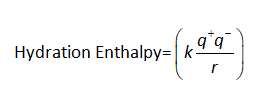Thermochemistry
Thermochemistry can be considered as a branch of thermodynamics that deals with the connections between warmth, work, and various types of energy, formed because of different synthetic and actual cycles. Thermochemistry describes the energy changes that occur as a result of reactions or chemical changes in a substance.
Exergonic Reaction
The term exergonic is derived from the Greek word in which ‘ergon’ means work and exergonic means ‘work outside’. Exergonic reactions releases work energy. Exergonic reactions are different from exothermic reactions, the one that releases only heat energy during the course of the reaction. So, exothermic reaction is one type of exergonic reaction. Exergonic reaction releases work energy in different forms like heat, light or sound. For example, a glow stick releases light making that an exergonic reaction and not an exothermic reaction since no heat is released. Even endothermic reactions at very high temperature are exergonic.
Which of the following anions would you expect to have the greatest ΔHhyd?
The amount of energy released when 1 mole of an ion gets hydrated is termed as hydration enthalpy. The difference in the force of attraction between the ions of any salt within the crystal and the attraction between the ions of salt with positive and negative dipoles of water after dissolving leads to the hydration enthalpy.

Where,
The charge of the cation is q+.
The charge of the anion is q-.
The radius of the cation or anion is r.
Step by step
Solved in 2 steps with 1 images









